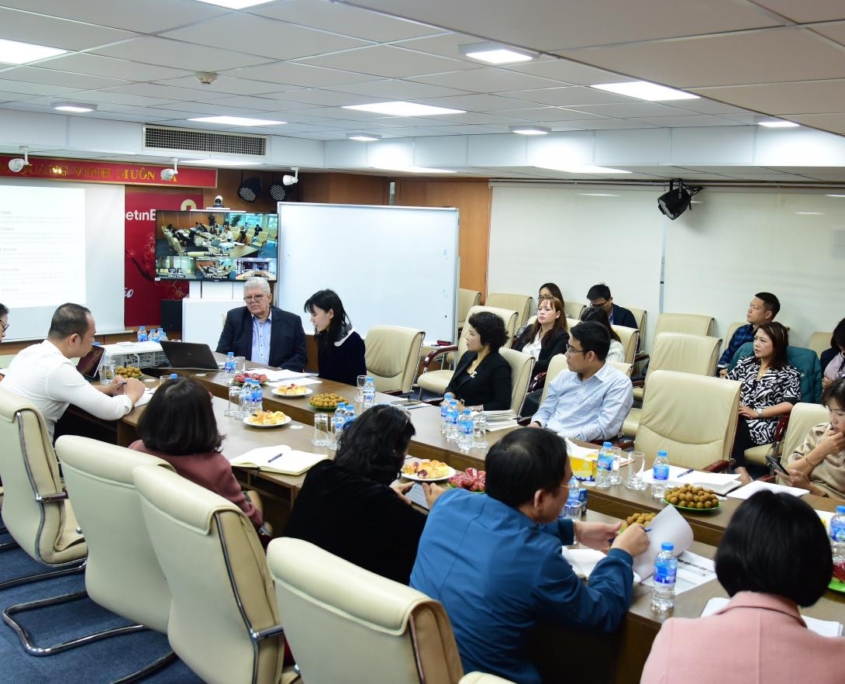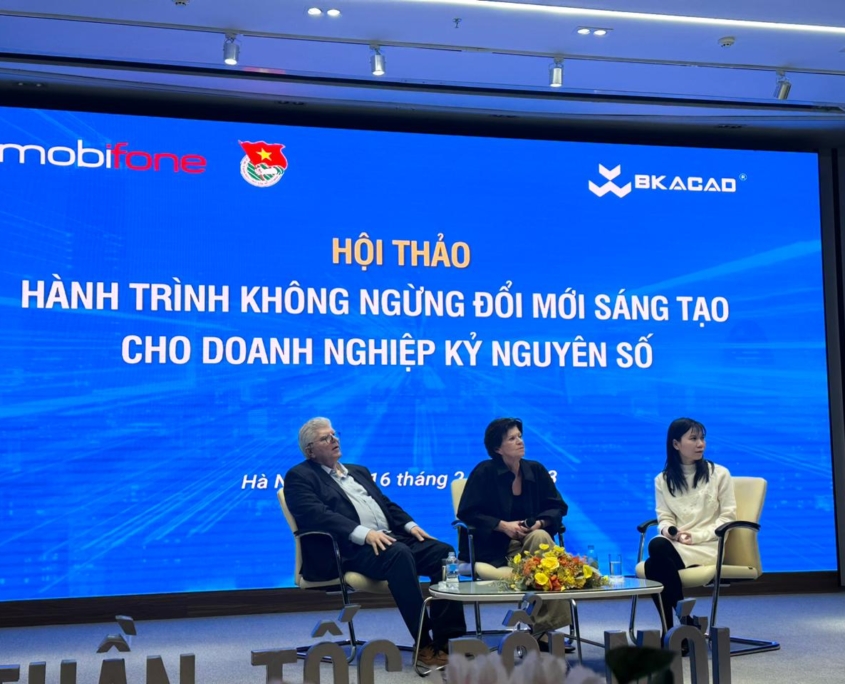Rising Vietnam – Part I
This post is the first of two parts, sharing our trip to Vietnam, the first after Covid, and our impression of how the country continues to rise with nearly two-digit growth rates. It also talks about the fantastic energy corporations put into innovation and how they work in many ways different. Singapore, Vietnam, South Korea, Indonesia, Japan, and China are on eye level with Europe and the US. In some ways still behind and in other ways already ahead.
Last week, together with our partner in Ha Noi, we had some fantastic “meetings” with Vietnam-based enterprises. Here in the capital city, where the government resides, almost half of the Vietnamese enterprises have their headquarters. I say Vietnam-based because we see enterprises from every developed country here in Vietnam. It appears to be the next Silicon Valley. Here in Hanoi, you go shopping and you find your Emmi Yogurt, Lindt Chocolate, you go from floor to floor using a Schindler elevator, you drive in European, Japanese, or Korean cars, and you read any news from around the world. But you can also buy exceptional Vietnamese chocolate. And saying this as a Swiss guy tells you something. You see VinFast cars, looking great and fully electric. When getting a Mobifone account the functionalities go much beyond what you know from old-style western mobile communication. And if you had a banking account here with Vietinbank you know where digital banking is going. We experienced progress across all aspects of life. Moving from improvement and getting better features towards genuine innovation, is an all new discipline. Here we not only bringing innovation concepts and the latest discoveries, we find the seeding ground to turn those methods and technologies very fast into action. And FAST in Asia translates to almost “immediate” in the West. And well-educated people are in this young and 4 million population strong city plentiful.
What makes fast so fast?
The executive bench of an Asian enterprise has an average age of 40. The overwhelming protectionism and ruling system, bureaucracy, and administration for large-scale decisions in the west is here maybe a month or two. And instead of speaking to one person who decides internally to speak with somebody else and then forms a committee and months pass by to talk to decision-makers is here one day if a topic is relevant. Why? The learning-collaboration-decision paradigm is something that all relevant leaders and employees do together. Progress is a joint effort – there is no question. For instance, at the “meeting” at Vietinbank, about 10 senior executives and roughly 350 teammates joined the meeting. 80 or so locally and 250 joined via video conference. And this is why I put the word “meetings” in apostrophes.
The Future of Banking

Rising Vietnam – Part I – Vietinbank
Our first meeting was with the leadership team from Vietinbank in Ha Noi. A young bank determined to bring its services to countries around the globe. They are already in several countries in Europe. And for the expansion, they look into advanced technology. The key topics are about transformation and innovation. We shared our vision of future banks and how they become technology companies. The old value propositions of having money in a safe, safes for clients, people behind a counter, vanish away. High speed asset transfers, digital asset management, certificates, money, loans, policies and alike values is the future. We discussed the usage of quantum computers to be able to transact a massive number of activities in parallel that also simultaneously looking into all variations of security aspects and transaction plausibility, and obviously AI, AR, and other technologies. An interesting trend in all our conversations was, that enterprises are less interested in having armies of consultants trying to do what leads to over-administrated organization structures but to new thinking, innovative approaches, and organization models that are not only more effective but more importantly easy to adapt to new situations at any point in time.
The Future of Communication

Rising Vietnam – Part I – MobiFone
Another impressive meeting was a seminar style with a roundtable and roughly 380 attendees at MobiFone, Ha Noi. Together with our local partner, a massive conference was organized with executives, managers and knowledge workers from all over the country. We met with the CEO and his board to explore the future of communication. Unlike Europe and the US, mobile communication in Asia has always been ahead. In Vietnam however, we experienced an exceptional drive to move fast forward. It’s no longer about a phone company but a communication technology leader that has the DNA to become a global leader in communication technology. We talked about innovation not in the context of the next phone but in the context of communication in general. While mobile phone companies focus on leveraging their existing connections for the next generation of phones and apps, communication, in general, will be not just phones and not even just humans but everything that communicates. This isn’t just bold thinking but there is also the readiness for action. And again, speed is what characterizes the Asian and with it the Vietnamese management style the best. Whether it’s 6G, 7G, or 8G is only a question of improvement. New business models, new use cases, and new markets are what make the difference in the future.
Like many companies before us, we will invest in Vietnam and see a mutual benefit by contributing to the Vietnamese economy and finding the much-needed resources for our own development. Jobs in the tech space are attractive all over the world and so it is here too. A big thank you to BK Holding our partner in Hanoi for organizing this week and helping us get started in Vietnam.
If you like to join our second part of the journey, going to Ho Chi Mimnh, please read Part II 🙂
#Vietnam #Hanoi #Saigon #HCMC, #innovation #transformation #future #jobs #progress



Leave a Reply
Want to join the discussion?Feel free to contribute!